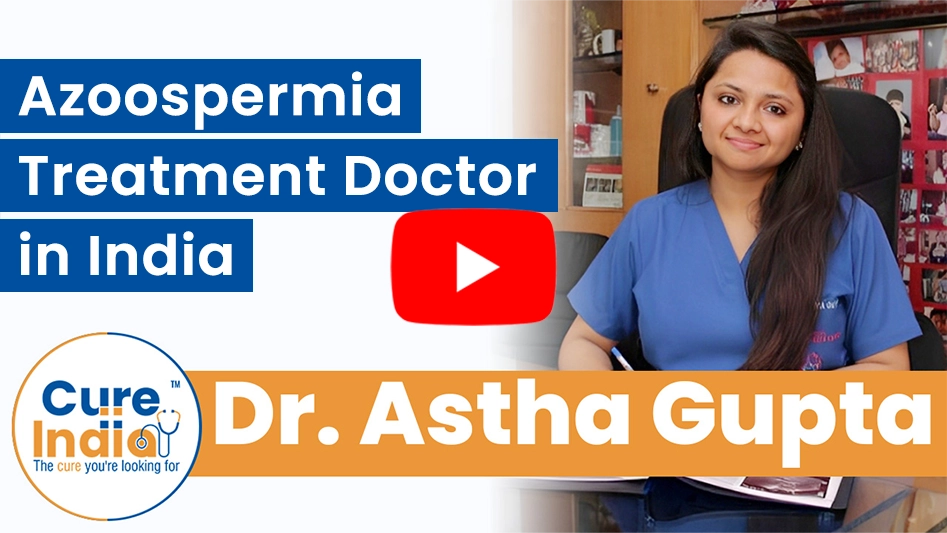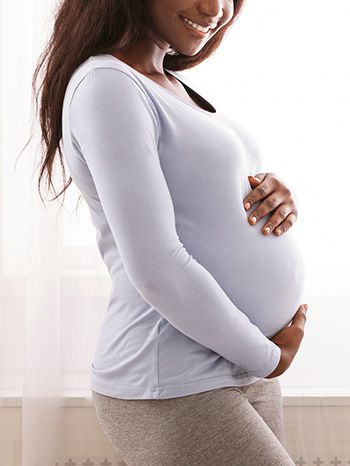

Almost every year, several African patients travel to countries like India to seek fertility treatments like Azoospermia treatment because of the limit access to very few healthcare facilities in their home country. Thus, they suffer from getting unadequate care for various complicated diseases such as azoospermia, a male infertility disease that needs specialised attention. Also, azoospermia treatment is complex because it involves many stages. This includes surgical azoospermia treatment for blockages, and medical azoospermia treatment, with low to no sperm production regarding genetic or hormonal conditions.
Medical treatment in Africa includes less availability of modern equipment and high costs to conduct obstructive azoospermia treatment procedures. Thus, patients seek treatment from other countries that have expertise in medical services. In countries like India, patients receive appropriate diagnostic workups and accurate obstructive as well as non-obstructive azoospermia treatment. Thus, people from Kenya, Tanzania, Congo, Ghana, Cameroon, and Rwanda come to India for the best azoospermia treatment in India.
If you have been trying without luck to make your partner pregnant, you might need to seek an infertility specialist for a check-up.
Azoospermia is a medical condition in which a man’s semen contains no sperm. This condition affects 1 in 100s’, and is associated with infertility. Many forms of azoospermia are amenable to medical treatment. Azoospermia treatment in India is done by internationally-trained urologists for Azoospermia treatment. The treatment plan depends on the cause of the condition along with the fertility potential of the female partner.
India is preferred for azoospermia treatment because of favorable costs and availability of some of the best Azoospermia male infertility hospitals. The best treatment for azoospermia and its causes is possible in any modern center to help childbearing. Specialist physicians provide reasonable medical solutions for both forms of azoospermia and give men the opportunity to become biological parents. Also, azoospermia blockage treatment is concerned with eliminating causes that prevent sperm from getting to the semen. For non-obstructive azoospermia treatment in India, the therapy encourages sperm production or recovery. India combines high quality with an affordable azoospermia treatment cost for many couples.
Azoospermia, which is the absence of sperm in the semen doesn’t have any specific symptoms. If the male partner has zero sperm count, the couple trying to conceive will experience infertility. Whereas, some of the causes of azoospermia can lead to noticeable signs and symptoms, which includes:

However, it is possible that a person with azoospermia will show none of the above mentioned symptoms but will still have it.
The causes of azoospermia and azoospermia blockage treatment can vary from person to person. The condition suggests that you might have a problem in sperm production and ejaculation. The causes of azoospermia can be:

There are many genetic causes such as Y-chromosome microdeletions, and karyotypic abnormalities. One of the most common genetic disorders is Klinefelter Syndrome. It occurs when a male possesses an extra X chromosome.
The pituitary hormones stimulate the testicles to produce sperms. The absence or deficiency of these hormones can prevent sperm production.
Exposure to toxic chemicals such as heavy metals, chemotherapy, and radiation therapy can all impair sperm production. Sperm banking is recommended prior to chemotherapy or radiation treatment for this reason.
Sperm production can also be affected by varicoceles - swollen varicose veins in the scrotum. Varicoceles cause blood pooling in the scrotum, which negatively affects sperm production.
There are different types of azoospermia and their causes. There are two ways to differentiate azoospermia. If talking about in where in reproduction cycles things go wrong, azoospermia can be classified into:
This is a rare type of condition in which the testicles are normal but your body can’t get them to make sperms. It can be a result of treatments like chemotherapy or low hormone levels.
Congenital azoospermia is the type where the problem of no sperm production is evident at birth. In this condition, testicular malfunction occurs, and typically, they do not contain mature sperms. This can be caused due to genetic disorders, hormonal disturbances, or anatomical defects of the reproductive system. In the case of congenital azoospermia, there is a structural or functional abnormality in the testicles. This is distinct from acquired forms, which can develop in later years. Early testicular azoospermia treatment is necessary for reproductive health and possible recovery.
In this type, the testicles aren’t able to produce sperms normally. It can happen because of the following reasons:
This condition is one of the most common azoospermia types. It is a medical condition in which the testicles are able to produce sperm normally but there’s obstruction in ejaculation.
Post-testicular azoospermia is the most common azoospermia types. However, the most common way to differentiate azoospermia is
A medical condition which doesn’t allow the sperm or semen to reach the penis while ejaculation. This is caused by the obstruction in the passage and it is usually curable. Epididymitis azoospermia is a situation where inflammation occurs in the epididymis. It leads to a blockage that does not allow sperm to access the vas deferens. Also, epididymitis azoospermia is among the major causes of male infertility. In India, one can get many cures for this inflammatory disease. Also, obstructive azoospermia treatment may include microsurgical management to re-establish sperm transport. Other refined techniques are epididymal aspiration or testicular sperm extraction. These treatments enable epididymitis azoospermic males to conceive naturally and sire kids with the help of assisted conception.
It is caused by the primary hormonal issue or sperm development. However, there are various non obstructive azoospermia treatment options available.
Oligospermia is a medical condition of low sperm count affecting men. It is defined as having less than twenty million spermatozoa/ml of semen. Options available for Oligospermia treatment are:

An azoospermia treatment process requires precision and regular follow-ups to be successful. CureIndia will help you choose the most trusted azoospermia treatment specialists for your treatment in India. The doctors associated with CureIndia are highly qualified and trained to provide all types of IVF treatments. Let's hear from some of the leading azoospermia treatment specialists in India.




The azoospermia treatment cost in India depends upon the cause of infertility, the Azoospermnia type, and the technique used. The azoospermia treatment cost in India is:
| Treatment | Cost in India | Stay in India |
|---|---|---|
| Micro TESA Azoospermia Treatment in India | $5,500 | 6-7 Weeks |
| IVF+ICSI Azoospermia Treatment in India | $3,500 - $4,000 | 6 Weeks |
| Stem Cell Azoospermia Treatment in India | $3,000 | 1 Weeks |
The testicular Azoospermia treatment will depend on the kind of azoospermia the patient has and it’s cause. Also the female partner’s fertility situation will play a big role in determining the azoospermia treatment plan.

If the patient is having any infection, he may have symptoms like painful urination. However, one in four men have no symptoms of an infection but will still have azoospermia. So, it is necessary to treat any form of infection before any other azoospermia treatment.
Surgery is recommended to correct obstructive azoospermia or in the cases where natural conception is possible. Azoospermia treatment by surgery may include removal or treatment of varicocele & treatment for retrograde ejaculation.
The surgical treatment is by an experienced urologist or infertility specialist and it won’t correct your problem overnight. You have to be patient and a semen analysis will be ordered three to six months post-surgery by your doctor to check the results.
If the sperm levels are normal, the couple is advised to conceive naturally. If the conception is still not possible then other options are considered.
In some cases, azoospermia can be treated with medication. For example, retrograde ejaculation can sometimes be treated with medications, which can then enable natural conception.
Hormone treatment can be used to stimulate sperm development in some azoospermic men. In some cases, the hormonal support will get sperm cells back into the semen. In other cases, it will allow enough sperm development so that healthy sperm cells can be extracted from the testicular via a testicular biopsy.
In cases of retrograde ejaculation, if treating the retrograde ejaculation itself isn’t possible, your doctor can retrieve sperm from post-ejaculate urine. Then, depending on the amount of sperm available and any female fertility issues, either proceed with intrauterine insemination (IUI) or IVF treatment.
If a particular medication is linked to azoospermia, discontinuation of that medication or waiting until treatment completes is the first course of action.
For example, chemotherapy may cause azoospermia, but after cancer treatment, sperm may return months (or years) later. Or, if testosterone supplements are causing azoospermia, discontinuing testosterone may be recommended.
If exposure to toxic chemicals or excessive heat at work is suspected as a cause of azoospermia, changing your job may be recommended (if possible.) Sometimes, long-term exposure to toxins will cause permanent damage. In other cases, sperm development may return or at least improve and thereby improve the odds of success in combination with other fertility treatments.
Testicular sperm extraction, or TESE, may be used to extract sperm cells directly from the testes. You will receive sedation or general anesthesia before the procedure. The doctor will make a small incision in the scrotum and extract tissue from your testes. That tissue will be examined for sperm cells and, if not being used right away, cryopreserved.
TESE can be used when obstructive azoospermia is blocking sperm cells from getting into the ejaculate. TESE may also be used in cases of nonobstructive azoospermia to look for some usable, mature sperm cells that may be being produced, but not enough to get into the semen.
Sperm cells extracted via TESE can only be used with IVF and ICSI. ICSI - which stands for intracytoplasmic sperm injection—is when a single sperm cell is directly injected into an egg. If successful fertilization takes place (which is not guaranteed, even if the sperm cell was forced into the egg!), then the resulting embryo is transferred to the woman’s uterus.
With IVF-ICSI and TESE, there is an increased risk of passing along infertility to a male child. This is something to discuss with your doctor.
Genetic counseling is frequently recommended if there is any possibility that the azoospermia is linked to a congenital condition. It’s also recommended if IVF with ICSI is being used.
If you discover you are at risk for passing on an inheritable disease, a possible option is to add PGD to your IVF treatment. PGD stands for preimplantation genetic diagnosis. PGD allows doctors to screen embryos for some genetic conditions. Then, healthier embryos can be transferred.
PGD is not foolproof and can’t check for all possible genetic diseases. The procedure also has some risks. But, it can be a possible solution for couples wanting to have children with their own eggs and sperm, despite the increased risk for passing along a disease.
Another possible fertility treatment option for men with azoospermia is to use a sperm donor. A sperm donor may be chosen because getting sperm isn’t an option (for example, testicular sperm extraction is not always successful or possible), or this can be a first-line choice after diagnosis because other azoospermia treatment options are too expensive.
With a sperm donor, either IUI (insemination) or IVF will be used. This depends on the female partner’s fertility.
Another possible option is using an embryo donor. The donated embryo would be transferred to the woman’s uterus (or a surrogate.) If you choose to use an embryo donor, neither intended parent would be genetically related to the child.
Additional treatment options for men with azoospermia include considering adoption, foster parenting, or living a childfree life.


IVF/IUI/ICSI
Best IVF packages
Be proud parents
Consult Infertility Specialists
Thousands of successful IVF deliveries
Consult top IVF Clinics